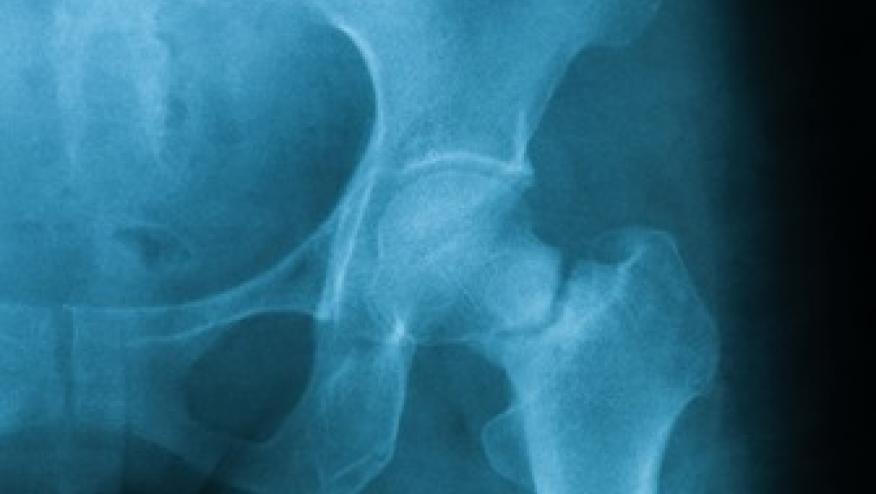Women at high risk of fracture remain untreated for osteoporosis Save

An estimated 100,000 to 120,000 fragility fractures occur annually in the Netherlands, the equivalent of at least 11 broken bones per hour. The cause is osteoporosis, a disease in which the skeleton becomes weak and fragile, leading to potentially devastating fractures that result in disability, loss of independence and premature death for some sufferers. Nevertheless, approximately 400,000 Dutch women at high risk remain untreated for osteoporosis, despite the availability of effective and safe medications; and, although data is not available, experts expect that undertreatment is also a major issue in men, who made up roughly 22% of the 976,000 individuals estimated to have osteoporosis in 2019.
There are proven solutions to this growing health problem, as outlined in the newly published report Solutions for fracture prevention in the Netherlands (in English and Dutch) issued by the International Osteoporosis Foundation’s Capture the Fracture® program in collaboration with leading Dutch experts, and developed with support from the Capture the Fracture® Partnership. The report provides a concise look at the osteoporosis-related burden and policy landscape in the Netherlands, and lists key policy changes needed to tackle the growing numbers of fragility fractures in the country.
Number of fragility fractures expected to rise by more than a third over the next 15 years
Prof. Joop van den Bergh, Maastricht University Medical Center, stated: “Fragility fractures are a major concern for public health and are associated with an escalating financial burden that cost an estimated €1.4 billion in 2019. By 2040, 25% of the Dutch population will be aged over 65 years, compared to 20% in 2020. As life expectancy increases, and if there is no change in healthcare policy, the number of fragility fractures is expected to grow by more than a third over the next 15 years. This will result in an enormous burden on our older population and their caregivers, and strain the capacity of our healthcare system to provide direct and long-term care.”
Poor treatment initiation is especially marked in the most high-risk patients, with half of Dutch women aged 50 years who have sustained an initial fragility fracture not currently receiving effective preventative care. One of the reasons for the large treatment gap is the low detection rate of osteoporosis, which has worsened over the past two decades for a number of reasons, including lack of awareness, failure to properly register a patient at the emergency department, and insufficient budget allowance and human resources to ensure systematic follow-up.
Post-fracture care services ensure patients receive effective treatment
Prof. Willem Lems, Amsterdam University Medical Center, stated: “Anyone who has already broken a bone due to osteoporosis is vastly more likely to sustain another, sometimes life-threatening fracture. A multidisciplinary, coordinator-based post-fracture care service, most commonly known as a Fracture Liaison Service (FLS), is a proven way to ensure that the most high-risk patients are identified and offered the post-fracture care they need to regain healthy mobility and prevent future fractures. Although the availability of FLS is growing in the Netherlands, more widespread implementation is needed.”
The new report emphasizes the importance of the 10 key action points to help healthcare professionals improve their osteoporosis care services which was published in 2020 by the Dutch Healthcare Institute (Zorginstituut Nederland, ZIN). The landmark report ‘Zinnige Zorg – Verbetersignalement Osteoporose’ (Sensible Care – Room for Improvement Report Osteoporosis) is endorsed by various parties, including the International Osteoporosis Foundation and was developed with input from notable Dutch key experts and opinion leaders. These include: making the fracture prevention care process explicit and bringing it to the attention of hospitals, care professionals and health insurers; adjusting guidelines and linking them to each other; increasing accessibility to Bone Mineral Density tests for patients over the age of 50; improving diagnosis and reporting of vertebral fractures; providing falls assessment and interventions services; treating more osteoporosis patients with bone-sparing medication, while providing lifestyle and fall prevention advice; treating more glucocorticoid users with bone-sparing medication; encouraging patients to maintain treatment with bone-sparing medication; not ceasing use of denosumab without post treatment; and, improving patient information and availability of decision aids.
Prof. Lems added: “It is imperative that the action points outlined by the Zorginsitituut Nederland (ZIN) are implemented or reinforced as a line of defence against the increasing fragility fracture crisis in our country. In addition, these action points are further documented in the new Dutch Multidisciplinary Guideline Osteoporosis and Fracture Prevention, led by Prof. van den Bergh. Crucially, the multidisciplinary working group has developed an evidence-based manuscript that is widely supported, based on the work of deputies representing endocrinologists, rheumatologists, geriatricians, radiologists, nurse practitioners, general practitioners, pharmacists, and patients.”
Prof. Lems and Prof. van den Bergh concluded: “It is now time for the implementation and optimization of FLS care in the Netherlands – we have blueprints for concerted action in the reports from the Zorginstitute (Zinnige Zorg), the IOF report Solutions for fracture prevention in the Netherlands, and the Dutch Multidisciplinary Guideline Osteoporosis and Fracture Prevention.
Philippe Halbout, CEO of the International Osteoporosis Foundation, thanked the leading Dutch experts who worked with the IOF Capture the Fracture® Policy Group to publish the new guidance, stating: “This is an important resource which provides a ‘roadmap’ of effective solutions that in synergy, would lead to fewer fractures and reduced healthcare costs, better patient outcomes, and, most importantly, a healthier, mobile and independent older population in the Netherlands.”







If you are a health practitioner, you may Login/Register to comment.
Due to the nature of these comment forums, only health practitioners are allowed to comment at this time.